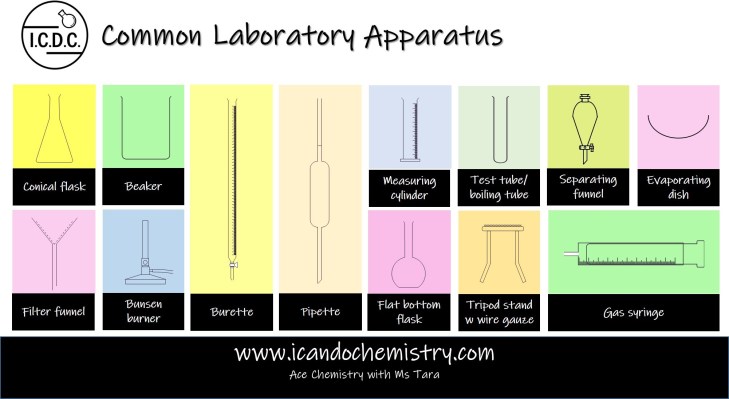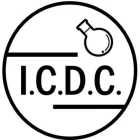
Measuring cylinder, burette and pipette
The above apparatus are used to measure liquid volumes.
Measuring cylinder is also known as graduated cylinder. It measures volumes of liquids to nearest 0.5 cm3. (30.0 cm3, 24.5 cm3).
We use burette to accurately measure volumes of liquids to nearest 0.05 cm3. (29.50 cm3, 38.45 cm3).
Pipette accurately measures fixed volumes of liquids to nearest 0.05 cm3. (20.0 cm3 and 25.0 cm3).
Gas syringe
Gas syringe, as the name suggests, is used to measure volume of gases.
Conical flask and beaker
Conical flask and beaker are commonly used to hold samples, usually liquids. The unique shape of conical flask allows easy swirling of liquid samples without spillage. Rubber bung (with delivery tube) can also be inserted at the mouth of the conical flask, allowing gas to pass through the delivery tube and collected.
Flat bottom flask
Flat bottom flask is also known as volumetric flask. We use it to measure specific liquid sample volumes.
Test tube and boiling tube
Test tube and boiling tube used in laboratory are made of glass (mostly borosilicate glass), not plastics. Hence, they have high heat resistance to heat and corrosive chemicals. To reduce mass loss during transfer of samples, their bottoms are designed to be spherical with vertical sides.
Boiling tube is wider than test tube. It is intended primarily for boiling liquids. We usually heat samples in the boiling tube as the glass is thicker and of higher heat resistance. Heating samples in test tube is also possible but the heat resistance may not be as strong as boiling tube. Test tubes are typically used to hold small amount of samples, usually liquid.
Filter funnel
We use filter funnel to allow easy transfer of substance (usually liquid) into an apparatus with narrower neck.
Bunsen burner
Bunsen burner is used to provide open gas flame for heating. It is connected to the gas source. Rotating the collar at the bottom of the tube controls airflow. If the holes are fully opened, flame will burn hot with blue flame. The hottest part of the blue flame is the tip of the inner flame. If the holes are fully closed, flame will be cooler, and appear orangey yellow, which the safety flame. We avoid heating using the yellow flame as it leaves a black layer (soot) on the bottom of the heated apparatus.
We will place the tripod stand above a Bunsen burner. Wire gauze is placed on the tripod stand to support the apparatus that contains the samples to be heated.
Separating funnel
Got a mixture of oil and water? We can separate the different liquid layers using a separating funnel.
Separating funnel is used to separate immiscible liquids of different densities. Liquid of a lower density will float to the top. Denser liquid will be collected first. Tap is closed before the top part of the denser liquid flows out completely. Sample of the denser liquid is collected in the beaker.
We will then open the tap and allow liquid to flow into another beaker. Then, close the tap when a little of the less dense liquid flows into the beaker. We will have a mixture of the immiscible liquids in this beaker which should be disposed. Pure sample of the less dense liquid is left in the separating funnel and can be tapped off into another clean beaker.
